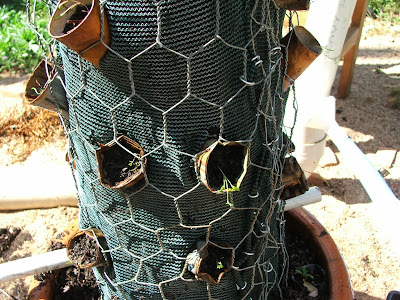We buy in bulk where we can and I send refillable containers to the local co-operative to be filled up with washing powder and detergent. Glass, recyclable plastic containers, aluminium and tin cans are taken to a recycling centre periodically. Food scraps, paper and cardboard are used in the chook pen for composting. That only leaves that annoying plastic; plastic wrap, Styrofoam trays, chip packets, chocolate wrappers and plastic bags. We commonly fill about one grain bag (20 litre size) per week of non-recyclable plastic.
I think I have found a solution at last;
Eco bricks. They have been used to build schools and houses in third world countries for a few years now and provide a handy way of getting rid of rubbish that would otherwise go into landfill.
Basically they involve stuffing clean plastic rubbish really tightly into PET bottles until they are full and hard, then put the cap back on. I have been making them for about two months now and have managed to produce about two a week. I never thought I would be thankful for my partner's coca cola habit, but he manages to provide just enough bottles to keep up with the plastic we produce.
 |
| Step one; collect all the clean plastic rubbish you can (wash it if you have to) |
 |
| Step two; using a stick or an old knitting needle, shove the plastic rubbish down into the bottle. |
 |
| Keep filling until you can't jam any more in, then put the cap back on. |
 |
| Stock pile them somewhere and use them to build. |
 |
| Beautiful buildings like this. |
Maybe I will collect enough to build the toilet out of them.......
Is this idea too crazy?? Can I get the local council to approve? What do you think?
























